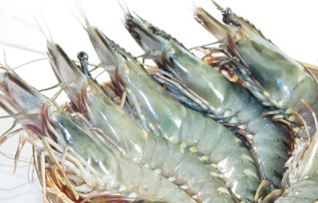 m Association of Seafood Exporters and Processors, in 2012 early mortality syndrome (EMS) cost shrimp farmers VND 30 trillion (USD 1.4 billion, EUR 1 billion) in losses. The loss in 2013 has been reduced thanks to biofloc technology (BFT).
m Association of Seafood Exporters and Processors, in 2012 early mortality syndrome (EMS) cost shrimp farmers VND 30 trillion (USD 1.4 billion, EUR 1 billion) in losses. The loss in 2013 has been reduced thanks to biofloc technology (BFT).BFT involves the growth of microogranisms in the pond water, which eat the shrimp’s waste and then later become a food source. The technology was applied by some farmers in some central and Mekong Delta provinces.
Together with BFT, some provinces implemented co-cultivation of shrimp and tilapia ponds, which proved effective. In the coming time, BFT will be further researched to suit for natural conditions of Mekong Delta before being transferred to farmers.
Minh Phu Corp, is one shrimp exporter using BFT to combat EMS and in 2013, the company stocked shrimp on more than 20 hectares, alongside tilapia. Accordingly to VASEP, shrimp mortalities from EMS have been reduced “remarkably.”
This year, farmers in Soc Trang, a Mekong Delta-based province, co-cultivated shrimp with red snapper. Accordingly, dead shrimp mortalities fell significantly, leading to increased shrimp output. Local farmers that took no measures of controlling EMS suffered shrimp mortality during the first 30 days of stocking which made up 30 percent to 70 percent of total stocking area.
The use of BFT measures in China and Thailand are also proving effective, said VASEP.
With measures to control EMS, Thailand’s shrimp sector has seen a recovery. The country’s shrimp output in 2014 is projected to hit 300,000 metric tons (MT), 50,000 MT higher than that of 2013 and may reach 500,000 MT in 2016. China’s shrimp production is expected to see similar recovery.





